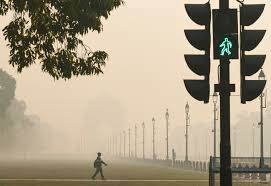The Supreme Court of India delivered a blistering critique of the authorities’ failure to tackle the capital’s toxic air crisis, warning that the persistent pollution is inflicting “permanent damage” on the health of Delhi’s residents and urging judges and lawyers to work from home.
With the Air Quality Index (AQI) soaring past 450, deep into the “severe” category, the court on Thursday ordered the immediate and strict enforcement of the highest-level Graded Response Action Plan (GRAP) measures.
A thick, hazardous smog has enveloped the National Capital Region for days, a familiar post-Diwali phenomenon worsened by smoke from agricultural stubble burning in the neighbouring states of Punjab and Haryana. The two-judge bench, hearing a plea on the pollution emergency, expressed its profound frustration and concern.
Justice B.R. Narasimha remarked, “Why should lawyers and judges appear in court in such conditions? Virtual courts are available. We are causing permanent damage to the health of our people. Wearing masks is not enough.”
Following the hearing, the Commission for Air Quality Management (CAQM) mandated GRAP Stage IV, which includes a ban on the entry of trucks, a halt to all construction, and the possibility of a return to the ‘odd-even’ vehicle rationing scheme.
The medical community echoed the court’s grave assessment. Leading pulmonologist Dr. Arvind Kumar stated, “This is not air, it is poison. Every breath is causing irreversible damage, particularly to the lungs of our children, who are most vulnerable.”
The broader context of this annual environmental catastrophe is a public health disaster. Studies have estimated that air pollution is responsible for over one million deaths in India each year and reduces the life expectancy of the average Delhiite by more than eight years.
The primary sources are well-known: agricultural stubble burning accounts for roughly 30 per cent of the pollution during this season, while vehicle emissions, industrial pollution, and dust make up the rest.
Despite the Supreme Court’s continuous monitoring since the mid-1980s, a permanent, effective solution has remained elusive, with political blame-shifting between state and central governments ensuring that the deadly smog returns each winter.
Sources: LiveMint, Business Standard.



















